The Desert
Bear and I are discussing some ideas for a winter get-away. Let us know what you think.
Timbuktu, Mali
Timbuktu conjures images of a remote, almost inaccessible place somewhere in Africa. While it is an actual city, many people think of Timbuktu as a mythical non-entity.
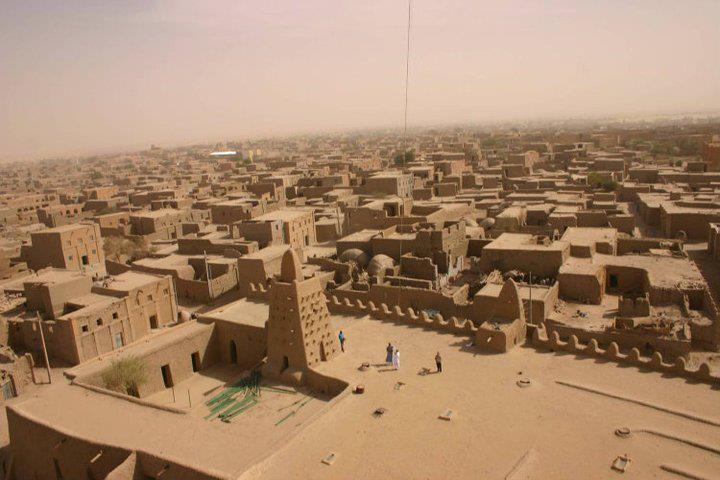
Timbuktu is constructed from the only raw material available locally. Dwellings have been sculpted from the desert sand that surrounds them, much like sandcastles at the beach.
Even the sky is made of sand. The blurry phenomenon hanging above the city in the photo above is called a Harmattan Haze. It is caused by mass microscopic silica particles picked up by the wind over the Sahara. The semi-breathable air doesn’t settle until the airmass reaches the Gulf of Guinea on the Atlantic Ocean.
A mosque in Abuja Nigeria, enveloped in Harmattan Haze.
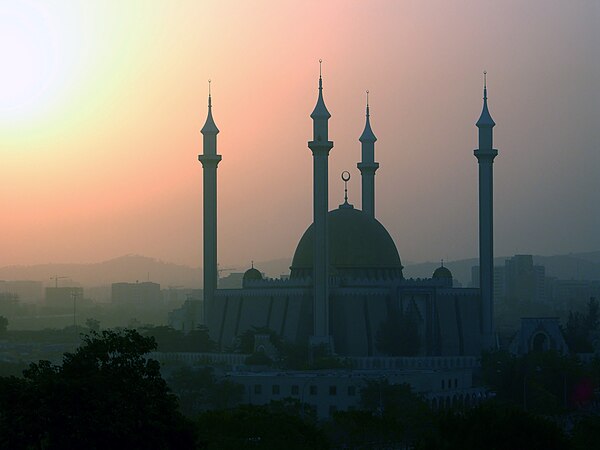
Located near the Niger River, Timbuktu was the southern terminus of the trans-Saharan gold, salt, and slave trades. Trade goods and slaves arriving from the north would be transferred from camel caravans to boats at Timbuktu, for shipment to ports on the Atlantic coast.
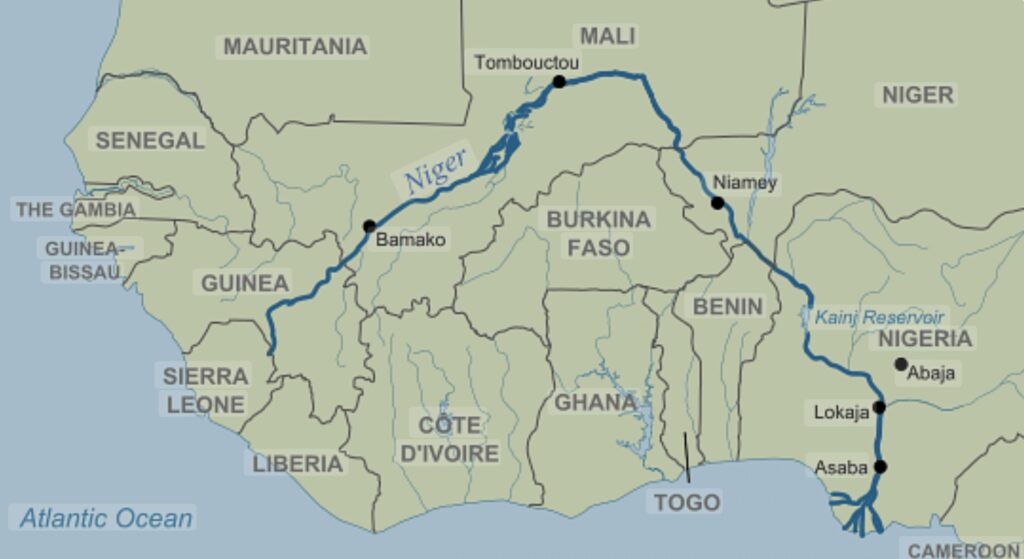
One version of the origin of the name of the city is that it was named after a disfigured slave woman who operated a storage depot at a caravan crossroads. Travelers called the slave and the town that sprang up at the intersection, Timbuktu, meaning “the one having a lump”.
Timbuktu became a stopping point on the Niger River for slave traders from the southwest. The Niger flows north, taking a bend near Timbuktu, then turning southeast on its journey to the Atlantic. Slave boats originating in west Africa would stop at Timbuktu for supplies.
Some of the less fortunate slaves would remain in Timbuktu, forced to mine salt from nearby quarries.
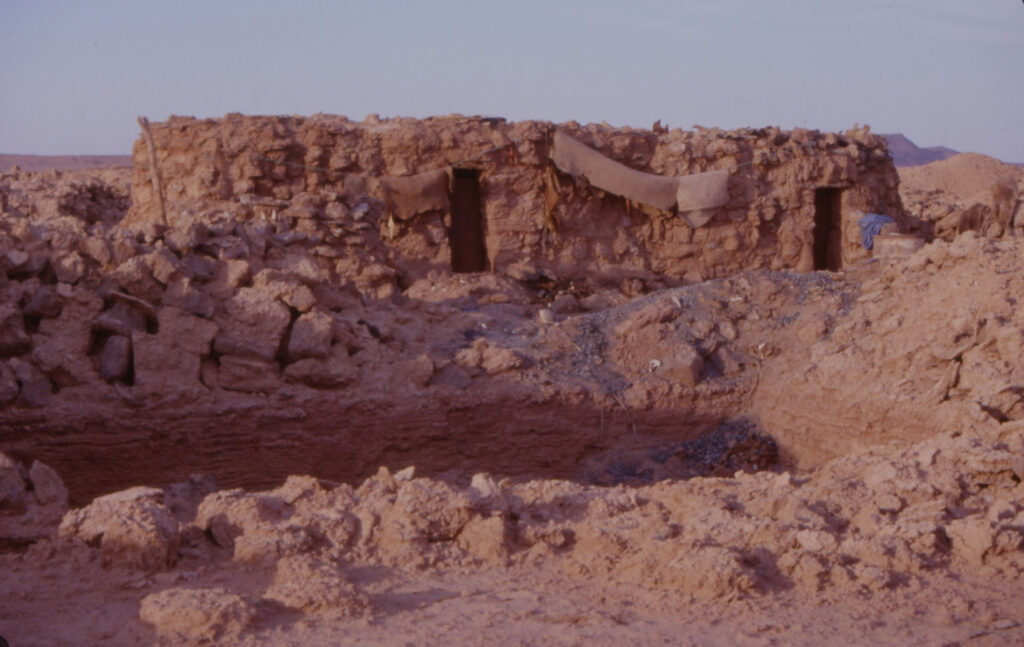
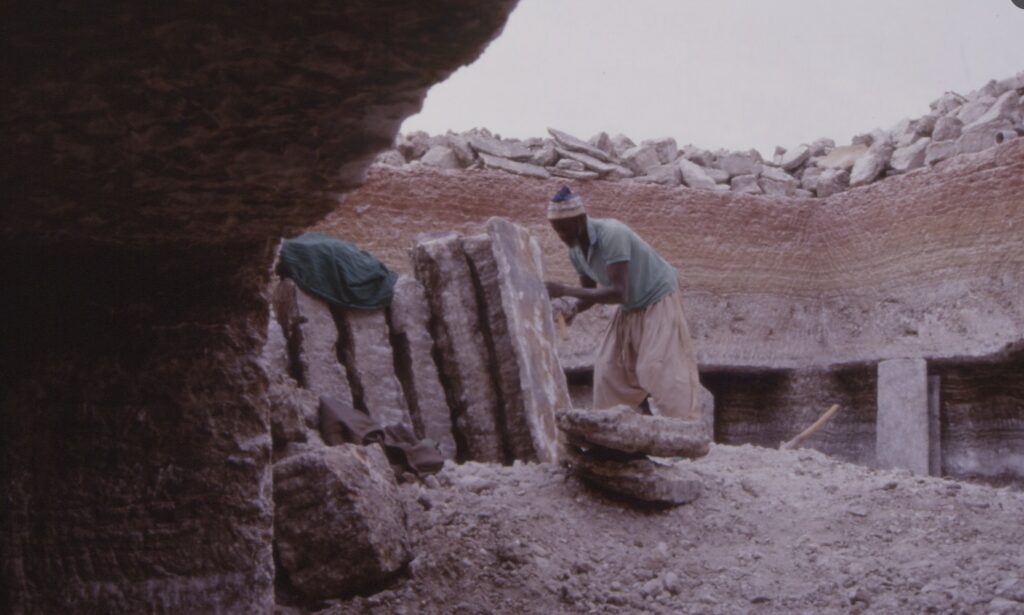
Imagine mining salt, by hand, in the Sahara Desert, while living in an adobe shack, with no running water. My lips and fingers are cracking just thinking about it.
Kunta Kinte, the fictional character from the 1977 TV miniseries Roots, was based upon an enslaved Mandinka tribesman captured in Gambia. The real African slave probably passed through Timbuktu on his journey to America.
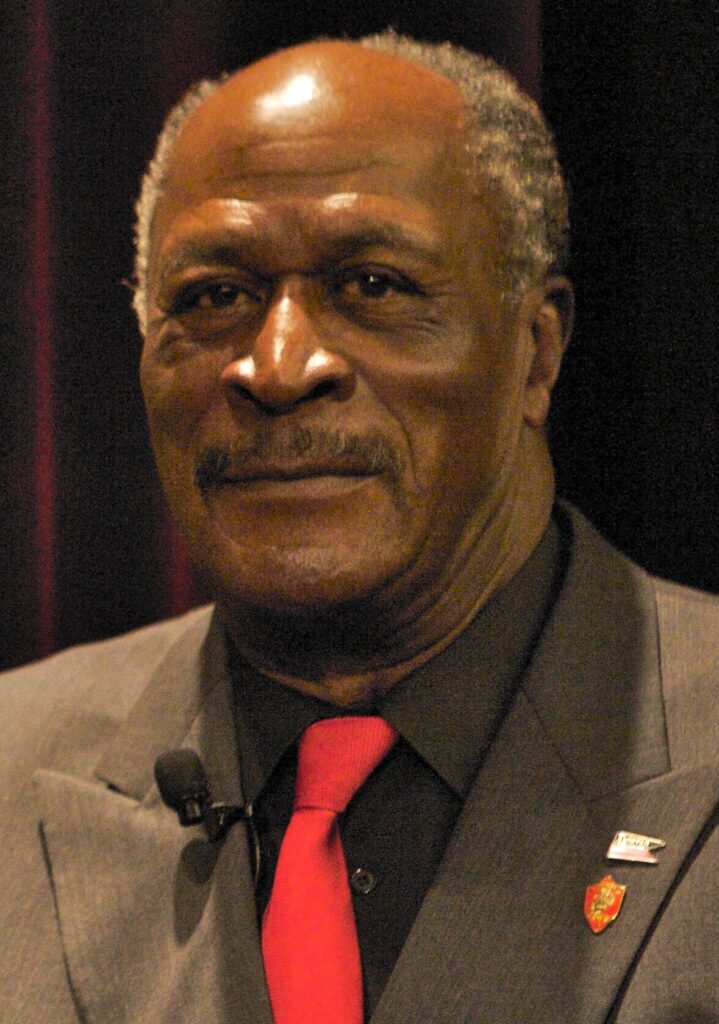
John Amos, the actor who played adult Kunta Kinte, died in August this year.
Modern Timbuktu has a population of about 55,000.
98% of the people are Muslims, 100% are tough as nails.

There are no roads to Timbuktu, other than desert truck routes for transport of salt and other bulk trade goods. Travel by boat to and from Bamako, the capital of Mali, is offered but it is terribly slow and undependable. There is a small airport at Timbuktu, but it has trouble staying active due to financial constraints. If and when the airport is open, a Sky Mali Boeing 737 occasionally flies between Bamako and Timbuktu. Other than that, animal caravans are the way to get around.
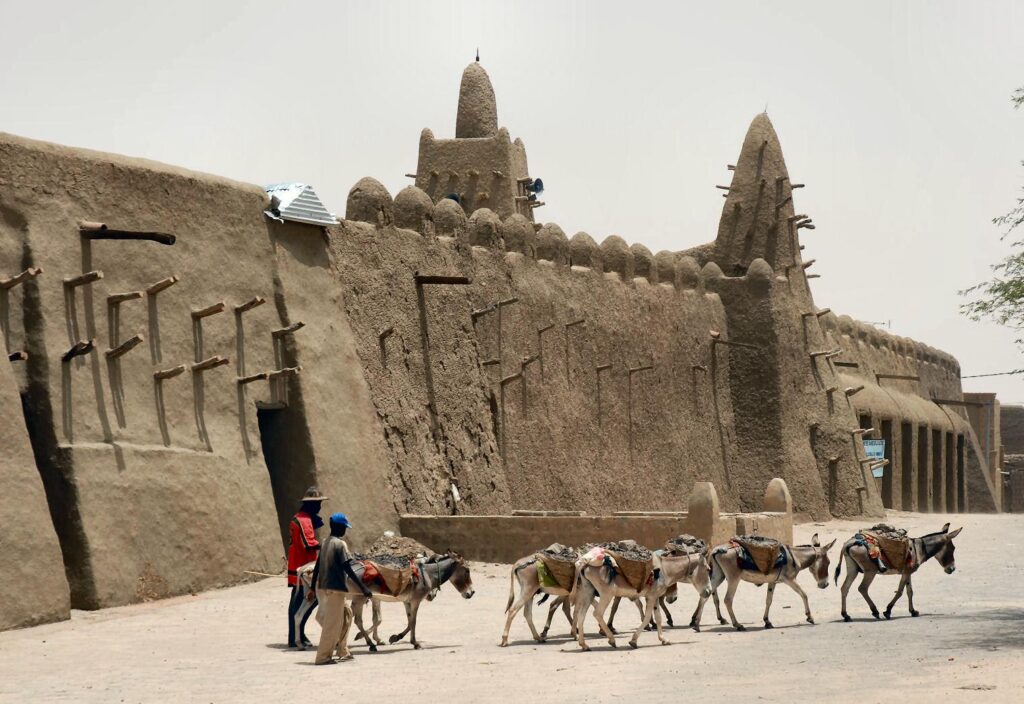

Camels and donkeys still feature prominently in Timbuktu’s transportation network, with camels better suited to the windy desert conditions than motor vehicles
Salt is still mined in the area, and agriculture is growing with water from the Niger diverted through irrigation canals. Gold is no longer mined here, and the slave trade is gone. Having said that, several tourists were kidnapped for ransom in recent years, some were murdered.
Unsurprisingly, tourism has dropped from a high of about 6,000 people per year, to less than 500.
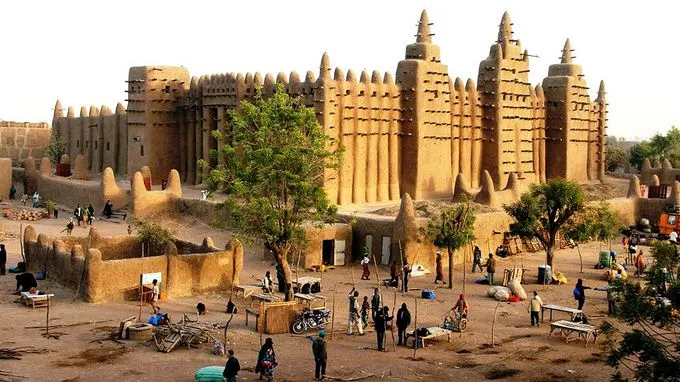
Timbuktu is one option we are considering for travel this winter, but there is another possibility.
Tuktoyaktuk, Northwest Territories, Canada

Panoramic image of Tuktoyaktuk in winter.
Tuktoyaktuk on the Arctic Ocean, at the northwestern tip of the Canadian mainland, has a population of less than 1000 full-time residents, and a very short, documented history. The mouth of the Mackenzie River has been traversed by nomadic indigenous people for millennia, but no permanent settlement materialized until 1928, when the Hudson’s Bay Company established a trading post.
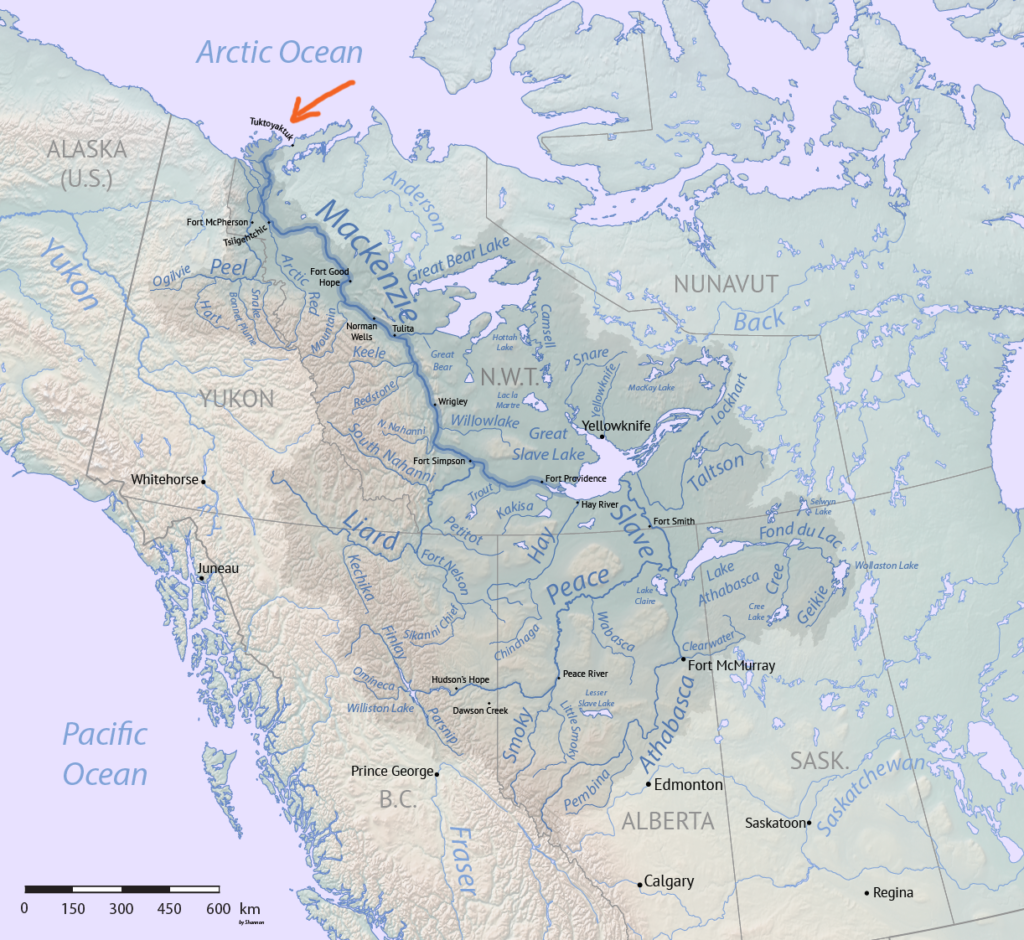
The meaning of the hamlet’s name, Tuktoyaktuk, is an anglicization of an Inuit word meaning “resembling a caribou”. Reef rocks off the shore apparently look like sleeping caribou, at low tide.
Like Timbuktu, Tuktoyaktuk is located in a desert. Despite being situated on an ocean, Tuktoyaktuk receives only 178mm of annual precipitation, more than half of it in the form of snow. Timbuktu by contrast has average yearly precipitation of 183mm, all rain.
Timbuktu has Harmattan Haze. Tuktoyaktuk has Aurora Borealis.
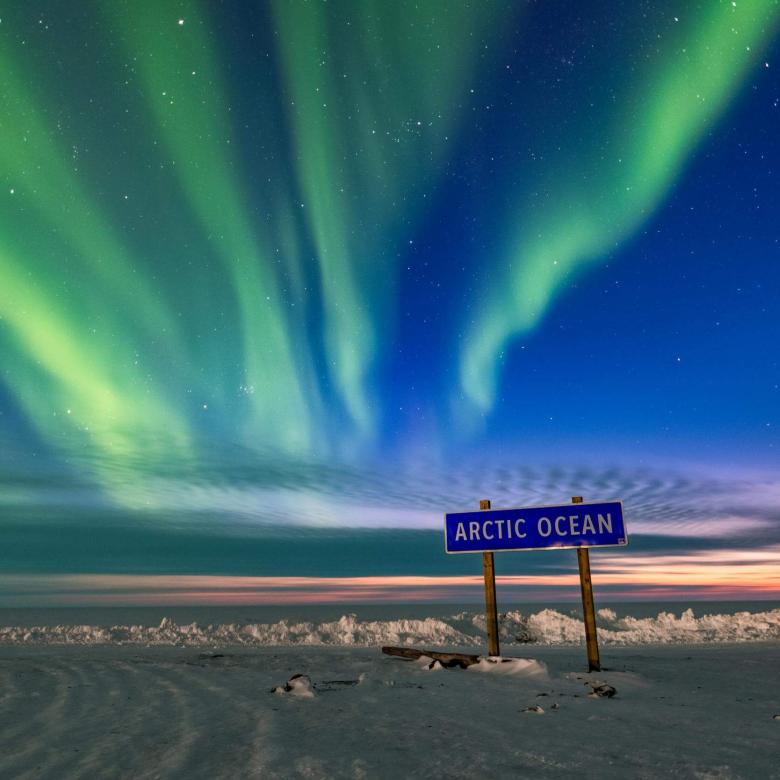
There are three ways to get to Tuktoyaktuk, none of them easy. There is a port, but the Arctic Ocean is frozen solid most of the year. A small regional airport services the hamlet when the weather permits. All arriving aircraft are routed through other small airports, making travel slow and cost prohibitive.
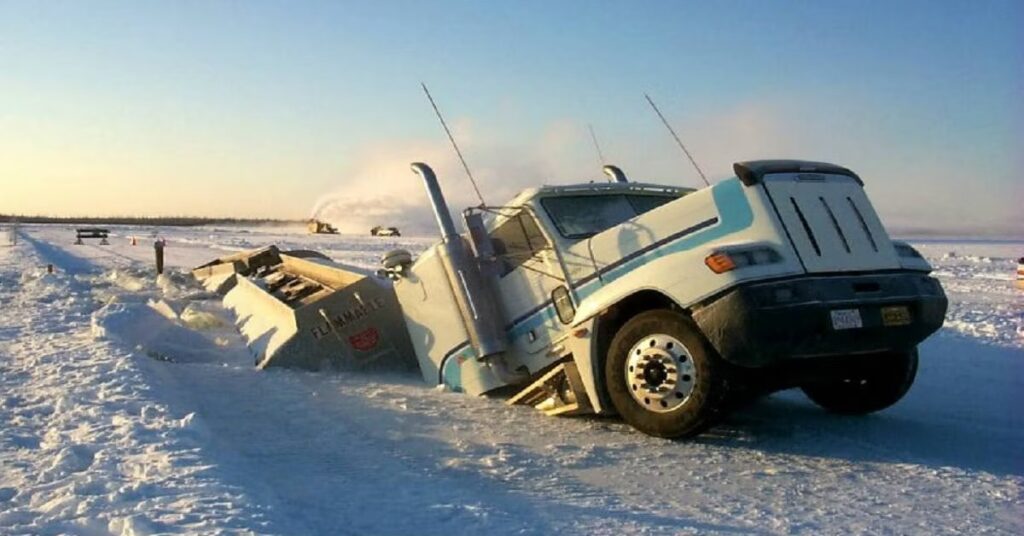
The third way into Tuk is by seasonal ice road, made famous by the CBC reality show, Ice Road Truckers.
Slavery is no longer active in Canada, but it has a heritage here as old as the Sahara. A group of indigenous people living at Tuktoyaktuk are called North Slavey people. They are descendants of people subjected to human bondage, as practiced in Canada’s high arctic for centuries.
The Slavey people are a sub-sect of the Dene, who inhabited the Mackenzie River valley. For millennia, Cree people from the south captured and enslaved individuals from the less aggressive Dene nation. The Cree named the group from which they gathered captives, Awokanak, which translates to English as Slavey.
Slavey girls, Mackenzie River, Northwest Territories (NWT), 1919.
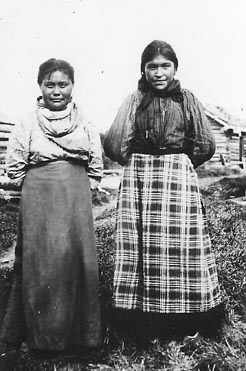
Great Slave Lake, Slave River, and Lesser Slave Lake all take their name from the Slavey people. Over the centuries, family groups drifted north along the Mackenzie River to the area around Tuktoyaktuk.
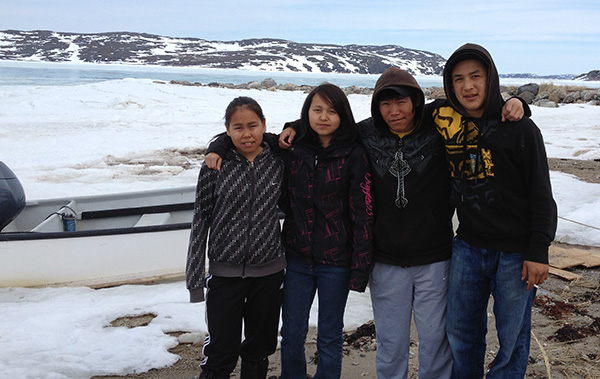
North Slavey people living above the arctic circle, at the mouth of the Mackenzie River, near Tuktoyaktuk.
The climate at both of our considered winter holiday destinations is severe.
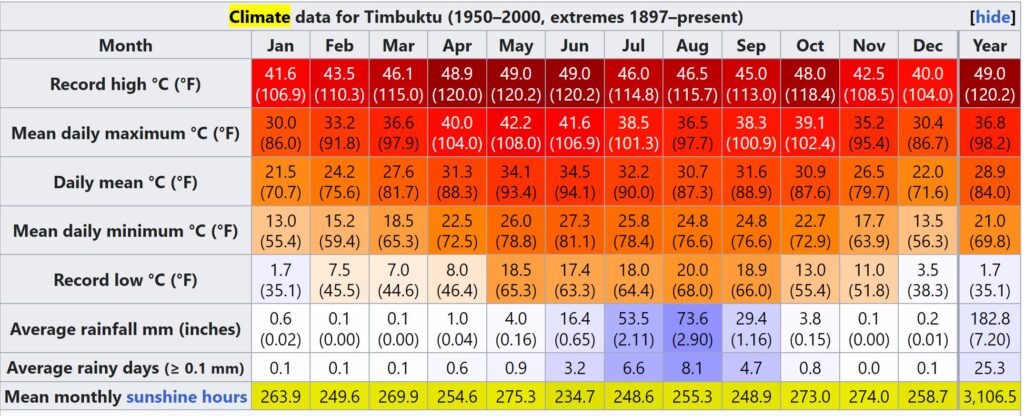
Summer in Timbuktu ranges from an average daytime high of 42°C, to “lows” of 26°C at night.
Tuktoyaktuk has winter “highs” of -22°C, to lows of -30°C. The lowest temperature ever recorded was -70.8°C, accounting for windchill.
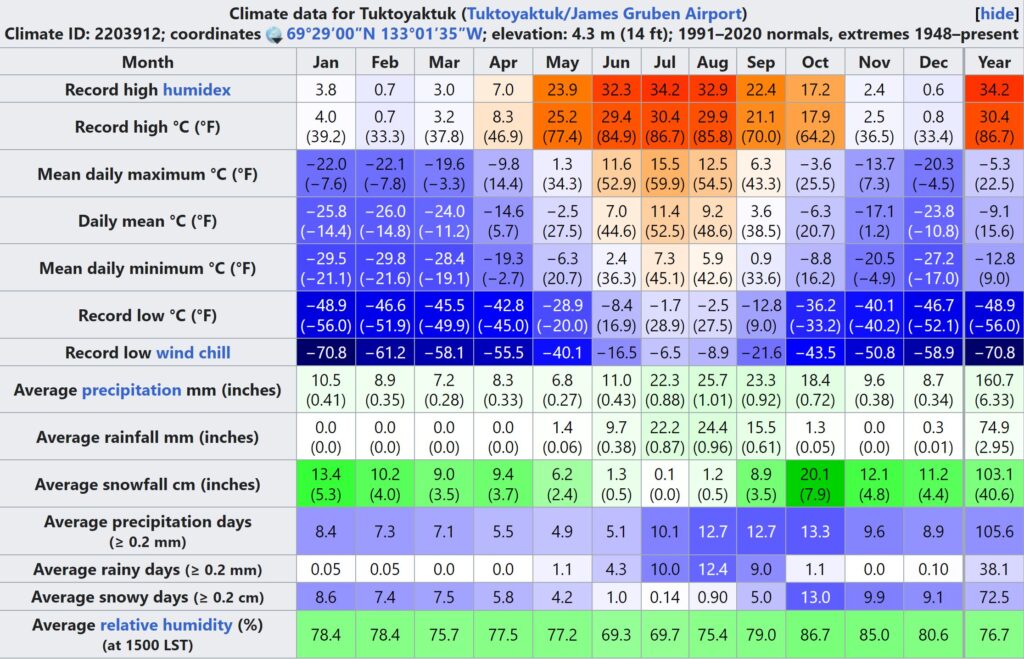
So, Bear and I have mulled it over and, with your help, we have made a decision.
As much as we would like to visit both places, one is too cold, one is too dangerous, and both are too difficult to get to. But, we have narrowed it down. We are going to find a destination somewhere between…
… Timbuktu and Tuktoyaktuk
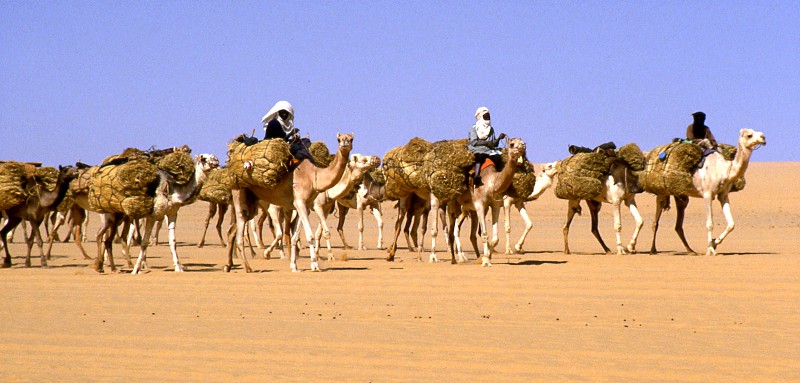
Bear, January 2025, riding the third camel from the right.


Leave a Reply